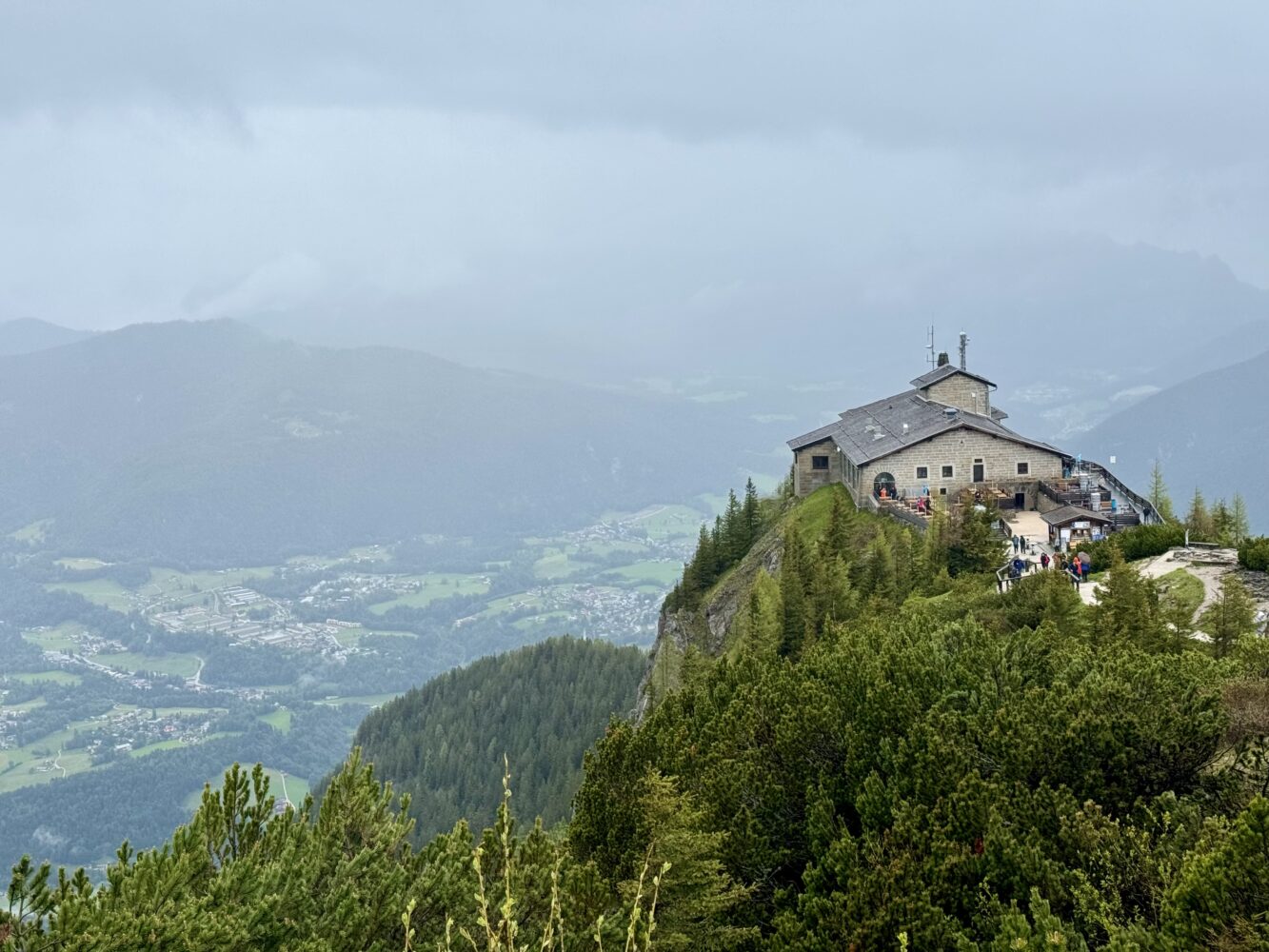
Views looking back down on Kehlsteinhaus – The Eagle’s Nest – from the nearby summit of Kehlstein Mountain (6,171′)
- Peak: The Kehlstein – 1,881 m (6,171 ft)
- Route: North Slopes
- Climber: Zambo
- Distance: 9.50 miles
- Vertical Gain: 3,186 ft
- Date: June 1, 2024
- Strava Track: https://www.strava.com/activities/11547034579
“The Eagle’s Nest was a surprise birthday present for Hitler built with Nazi party money. A mountaintop stone retreat built 6,000 feet up, accessible by a gold-plated elevator. It was one of the crown jewels of his empire. And the man was afraid of heights.”
– Major Dick Winters, 101st airborne division
When my family and I were planning a stop in Salzburg as part of our 2024 Euro adventure, I knew that we would be close to some pretty iconic mountains. And WWII history.
I’d had interest in this area ever since watching Band of Brothers over 20 years prior. I always remembered one of the culminating episodes set in these Bavarian Alps. After a long, brutal campaign spanning multiple battles, continents, countries, and years, Easy Company found themselves in an unexpected mountain paradise. I was touched by the introspective tone of the show as the men finally had the chance to muse about what lay beyond the end of the war. Classic scenes like Major Winters swimming in an alpine lake in the early morning, or talking about life after the war, or liberating Hermann Göring’s House and finding 10,000+ bottles of top-shelf liquor, set the perfect celebratory, yet pensive mood. The reflective tone amidst the beauty and serenity of the mountains always stuck with me.
This scene was always one of my favorites in the series. It also made me that much more interested to visit this area when I had the chance.
But before they had time to relax, Easy Company had to first liberate Hitler’s war-time compound in Obersalzberg. And his mountain-top fortress 3,000 feet above it: The Kehlsteinhaus, aka: The Eagle’s Nest. Given the setting, the history, and the surrounding mountains, it was a no-brainer trail running objective.
My journey began with a rainy early morning wake up in Salzburg, Austria. I caught the 840 bus which took me into Berchtesgaden, Germany some 45 minutes later. For nearly 15 years this dreamy little alpine village was the exclusive home to high ranking and important Nazi officials. From the center of town I got on the 838 bus which took me up the last few miles to Obersalzberg. This once-sprawling mountainside retreat above town was one of the main headquarters for the Nazi party. And Hitler himself. Indeed, he spent more than a third of his 12 years in power at this mountain complex.
Today, the area looks very different. Almost all war-time traces have been destroyed and a new Dokumentation Center has been built just above the Bergof – Hitler’s old house. Being the history buff that I am, I knew a tour of the museum was in order before I began my trek up to The Eagle’s Nest proper. And I am certainly glad I did it.
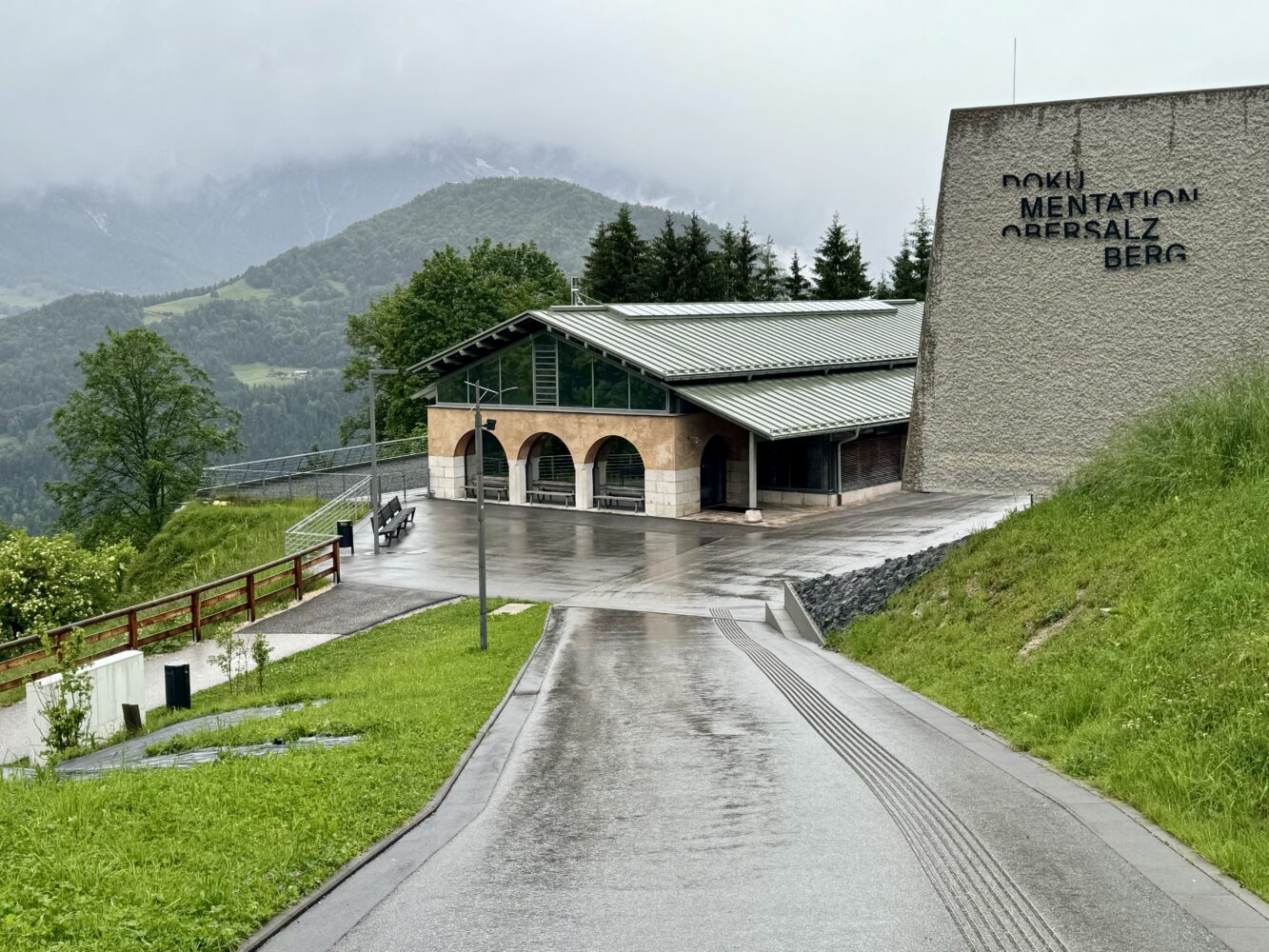
As convenient and tempting as it is for visitors to skip the Dokumentation Center en-route to visit The Eagle’s Nest, I found it to be one of the most powerful museums I have ever been to. As time marches onward, it seems more important than ever to ever to understand and listen to what it has to say. If you are ever in this area, I cannot recommend it more highly.
The Dokumentation Center is one of the finest museums I have ever visited. It houses exhibitions and documentation about the history and atrocities committed by the Nazis. The museum equips everyone with an audio guide that dutifully and systematically walks visitors through their rise to power, fight in WWII, eventual downfall, and the horrors & crimes they committed along the way.
The museum unapologetically hides nothing. Instead, it aims to fully chronicle, expose, and preserve the legacy of horror from fascists nearly a century ago. I found myself full of respect for modern Germans for leaning in so bluntly to such a dark period of their history. Moving from exhibit to exhibit and learning about the history of the area was a deeply moving, sobering experience.
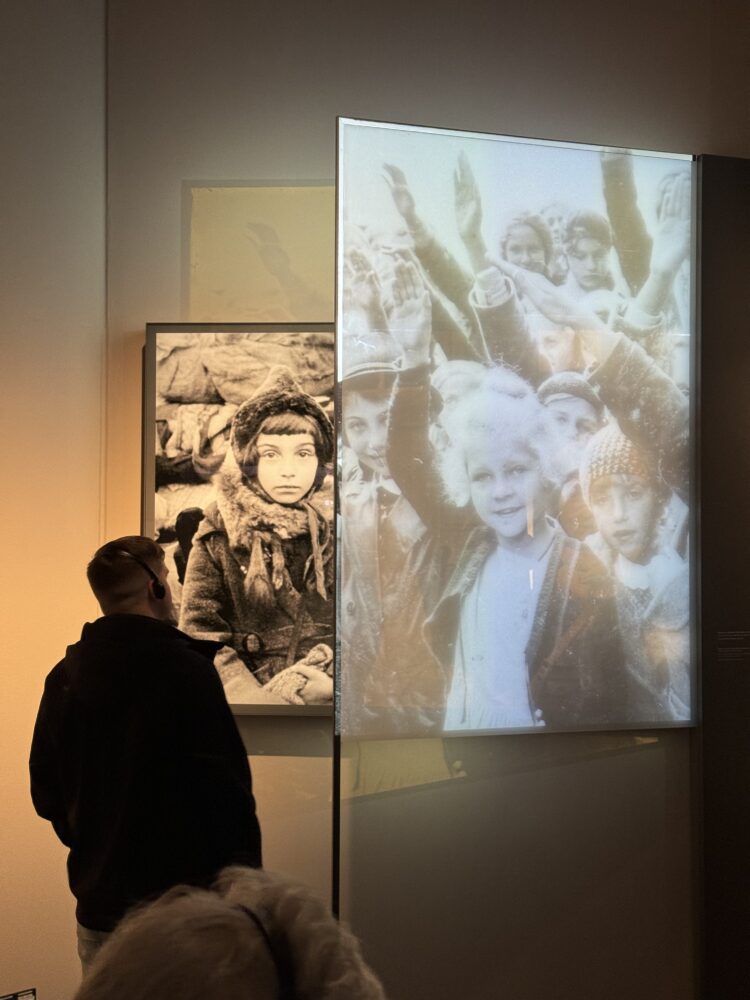
One of just dozens of stops along the excellently chronicled exhibits in the Dokumentation Center. The whole museum seeks to understand and unpack the rise of Nazism without sugarcoating a thing. For example, these dual images show the dichotomy and horrific power behind fascism. The image in the foreground is of German children triumphantly welcoming Hitler to this very place, Oberzalsburg, over 80 years ago. The image in the background is from one of the victims of Nazi terror. Her open diary lay in a case nearby. The displayed entry was from her chronicling the deaths of every single person in her family. All victims of the Nazis who once lived and ruled from this area.
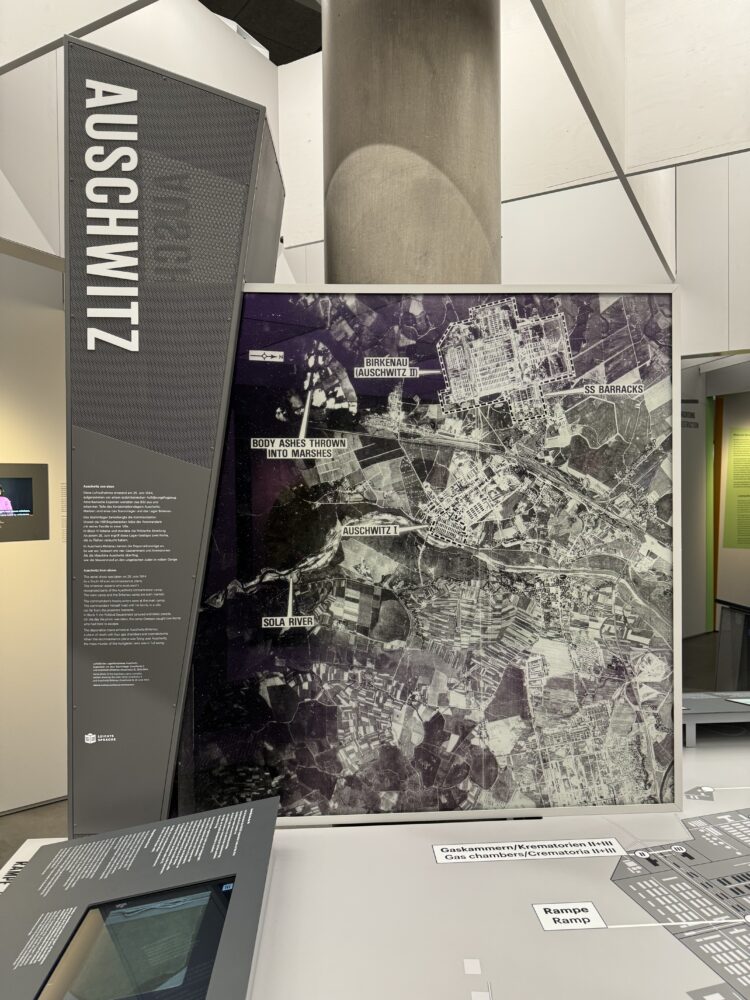
Another exhibit about the infamous Auschwitz Concentration camp: site of the murders of over 1,000,000 people.
Anther fascinating feature of the museum was its access to the extensive bunker-system under the complex. Utilizing Italian slaves, the Nazis built miles of bunkers and tunnels underneath the entire mountainside.
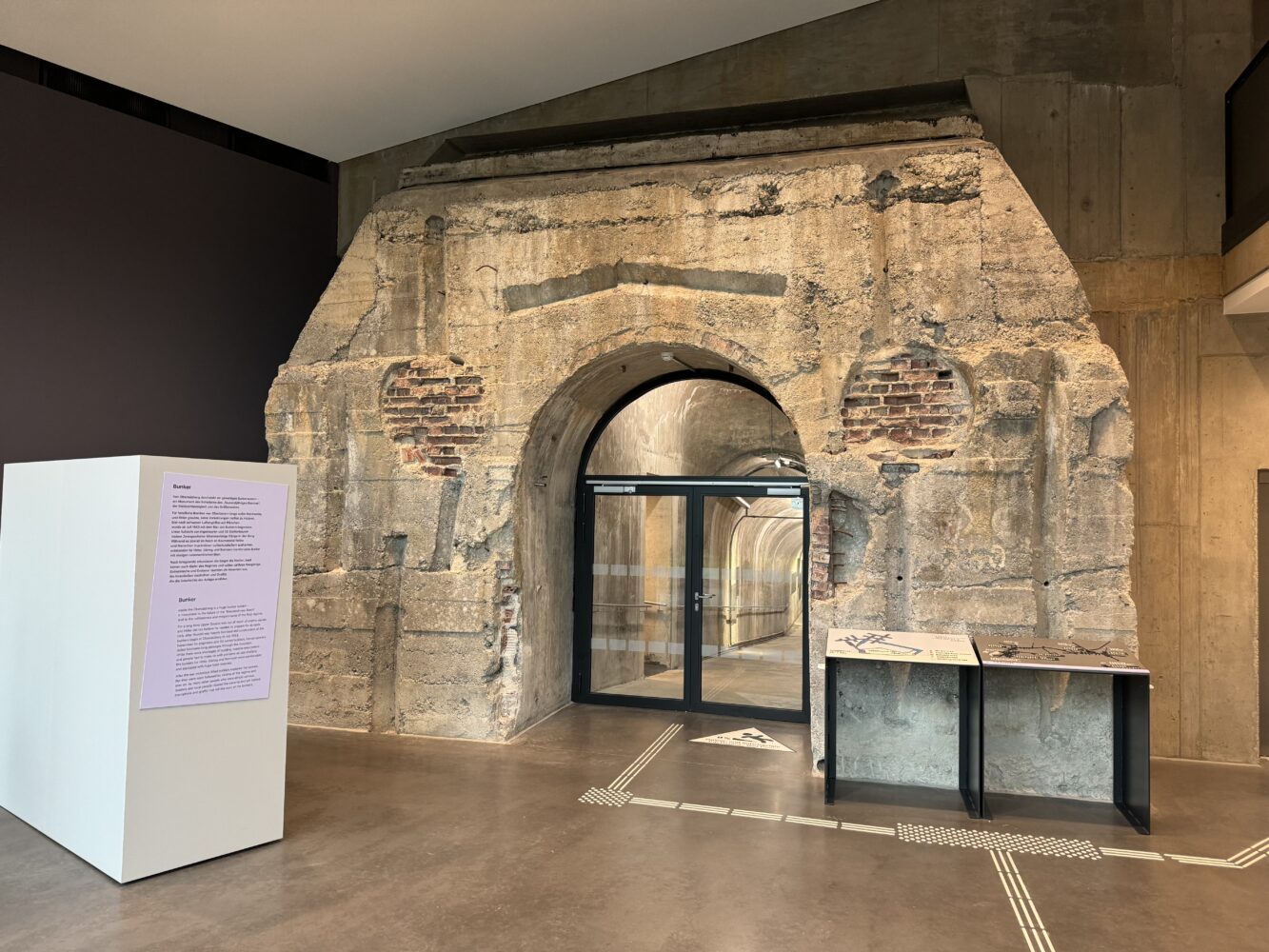
Entrance to the tunnel system underneath the Dokumentation Center. The museum had a surprisingly large number of tunnels open to the public. The underground area was vast and haunting.
I walked through the final tunnel and out of the museum full of reflections and thoughts. I wasn’t ready to join the hordes of tourists waiting in the bus lots and trails above. I wasn’t ready to shift gears into trail running mode either. There was too much to think about.
Instead, I walked around the side of the Dokumentation Center, looking for a path I hoped would be there. I quickly found it. A quiet, peaceful forest lane led me downhill (and away form my eventual goal) for about half a mile. Overgrown trees covered most of the trail from the misting rain falling overhead. I reflected amongst the soaring pines and verdant greens all around me. I was alone in the forest with nothing but the sound of my feet and the thoughts in my head. I eventually reached what I had come to see: the Berghof.
The foundations of stone are all that remained of Hitler’s former residence. From this very spot one of the most notorious men in history directed the single most destructive effort the world has ever seen. Political maneuverings, relentless propaganda, war mongering, invasions, a holocaust….all of it had been planned and directed from this place.
I found a bench and took a long while just to soak it all in.
It was a strange feeling to ponder the history of this area amidst the wonder and beauty of these mountains. The irony of so much evil being born in such a tranquil place was not lost on me. But a thought from the Dokumentation Center offered some poignant perspective:
“Places and landscapes do not bear guilt – but they are bearers of history. Obersalzberg is a historic place that was changed radically twice in the 20th century: first by and for Hitler, then after and against Hitler. However, bombs, detonations and forestation were unable to eliminate either history of the fascination of the monstrous figure of Hitler, which we often find hard to resist.
The place and the landscape remain inseparably linked with the dictator, with National Socialism and its crimes. Yet Obersalzberg itself is neither a perpetrator nor a victim; it does not stand accused, nor does it accuse us. Rather, if offers a glimpse of a story that goes beyond this historic place and confronts us with nationalist and racial ideology and its murderous consequences. It is up to us to look beyond the idyll.”
Wise words. And not just for a place such as this, but for anywhere in the mountains that we love so dearly.
After sitting and reflecting for a good long while, I decided it was finally time to lace up the shoes and begin my march up to The Eagle’s Nest.
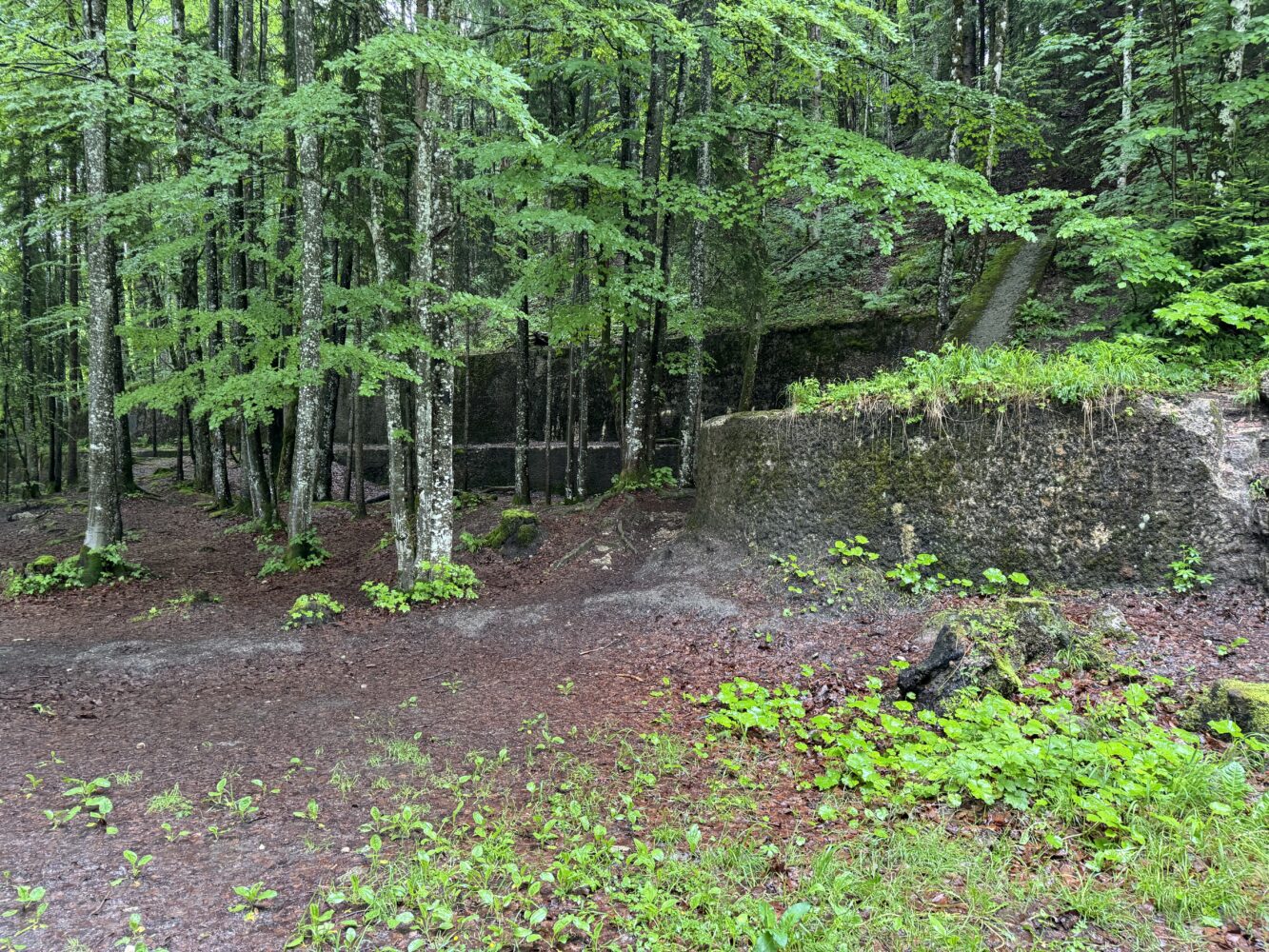
All that remains of the Bergof: ghostly foundations of a reign of terror from a lifetime ago. In spite of the wise perspective about places from the Dokumentation Center, I still couldn’t resist the urge to do one more thing before finally heading up the mountain. I walked over to the wall, loosened my shorts, and delighted in the opportunity to piss all over Hitler’s ruined house.
A Run Up The Khelstein
Full of thoughts and perspective, it was now time to embark on the 3,000 foot climb up to The Eagle’s Nest.
Easy Company triumphantly entering The Eagle’s Nest. Apparently there is some disagreement about which Allied group actually got here first. But I like to to think it must have been Easy Company. It would be hard to find a more deserving group for the prize.
The method most tourists use to reach the summit is via one of the many specialty buses that wind up the narrow mountain road. They then disembark and ride Hitler’s marble elevator up the final 400 feet. But as an eager trail runner in the middle of the Alps, this sounded like a colossal waste of an opportunity. I wanted to sample the beautiful woodlands and trails up under my own power.
I had two different Austrians warn me what a “boring” hike this would be. They were insistent that the scenery wasn’t all that good and that there were “loads of better hikes nearby.” But it didn’t matter. Running through history and in the Alps was plenty to keep me satisfied.
The funny thing was, they actually weren’t wrong. From a purely hiking perspective, the first four miles of the path were indeed pretty boring. The trek ascended at a relaxed angle and on a very ‘pedestrian’ trail. Wide, hard packed gravel eventually turned to smooth concrete for the last few miles. But what would have been a bit of a snoozer of a hike made for perfect trial running conditions. The easy grade allowed me to jog almost the whole thing. And the hard surface meant it provided excellent footing going both up and down, in spite of the rain overhead.
I had a somewhat difficult time finding a reliable map of this area beforehand, so I wasn’t 100% sure where I was going. Essentially, I first ran about a quarter mile along the bus route and then looked for a path turning to the right into the forest. From there, it was easy enough to follow the signs to ‘Khelstein’ that marked virtually every trial intersection. The Strava heat map helped me stay on course as well.
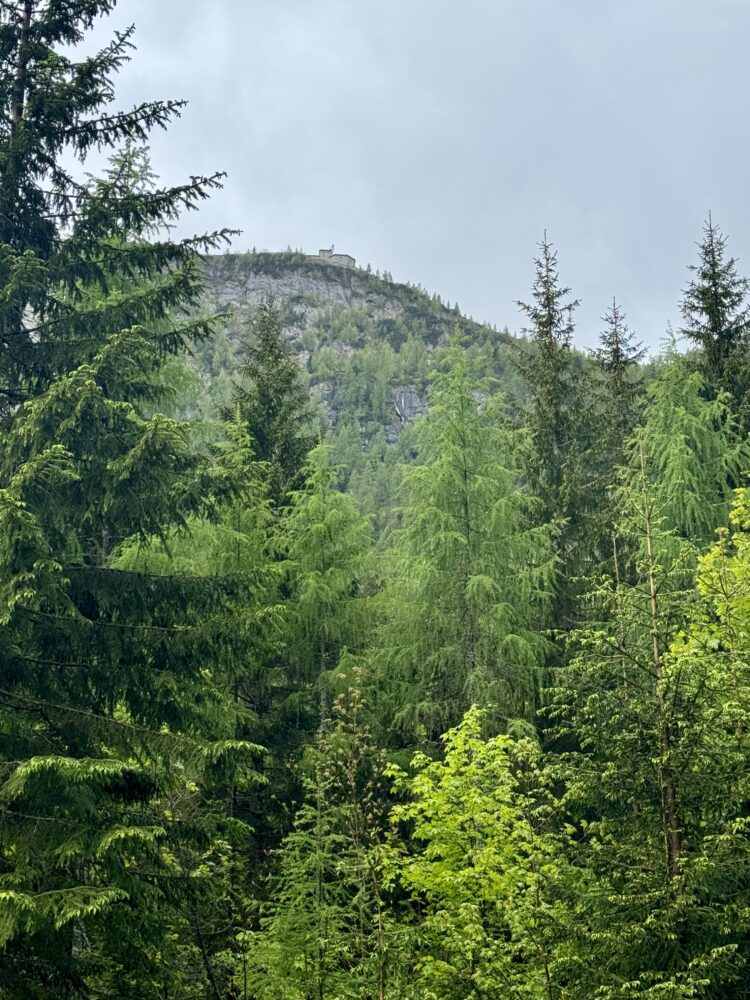
Still a long ways to go. But I was very much enjoying running in such a healthy forest. Its shocking and sad to realize just what a cluster the state of Colorado’s forests are after being in a place like this. Bavaria was wet, green, diverse, full of life, and with scarcely a trace of deadfall to be seen.
The lower parts of the trail crisscrossed the road a few times before eventually leaving it behind and heading up a bit more steeply. As I ran I couldn’t help but have visions of the men of the 101st from 80 years ago. Someday I’d love to also tackle the famous Currahee Mountain in Georgia that they made famous. Today’s effort would be a bit more challenging that their traditional “three miles up, three miles down.” But then again, I wouldn’t be doing it for the umpteenth time. And I also wouldn’t be doing it with a belly-full of spaghetti like they did once, so that was nice.
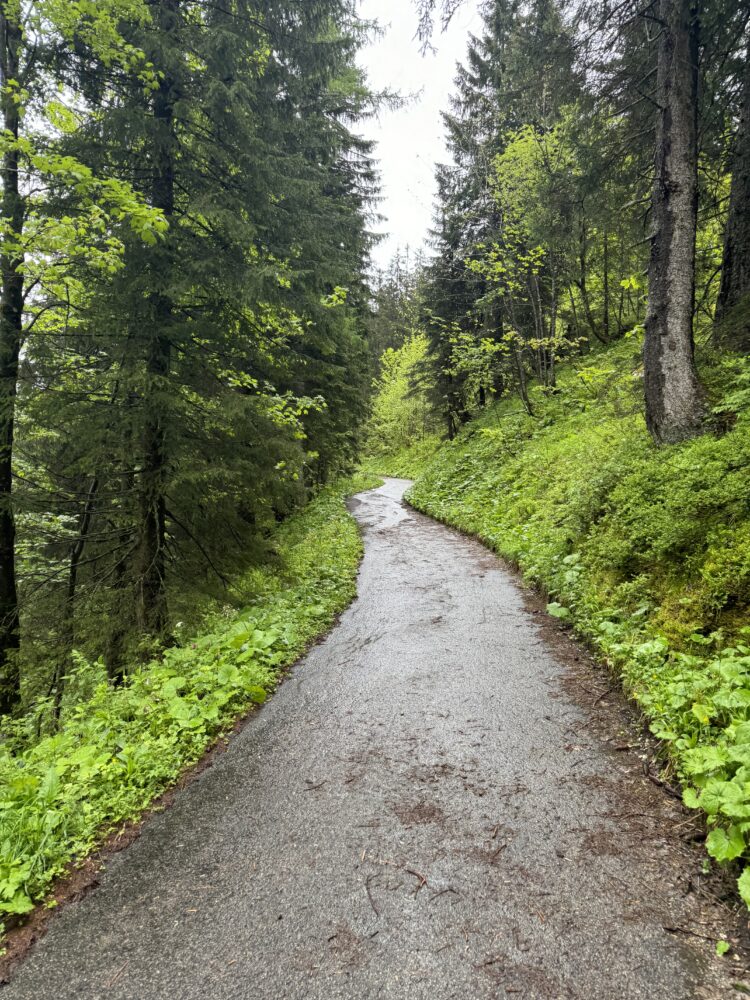
Somewhere around the halfway point the trial turned to concrete. Normally this would not have been ideal. But today it was great as it made for a better, drier footing for running. That’s also just kind of how a lot of the Alps are. So many years of people living here means there’s not much in terms of true wilderness until you get above ~2,000 meters.
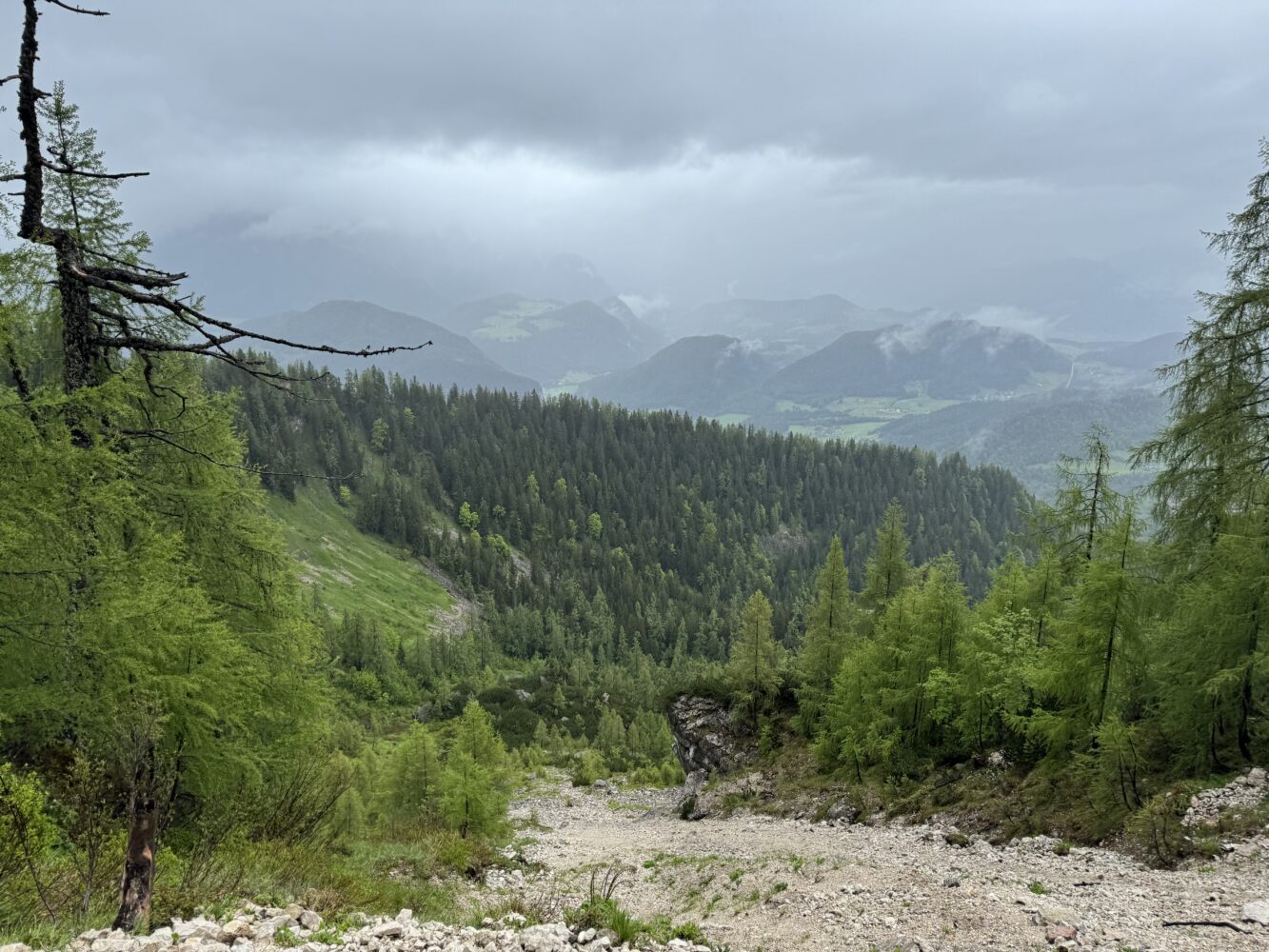
Finally, a break in the thick tree cover thanks to a rock slide path. Despite the limited views because of the rain, the low clouds made for an absolutely fantastic setting.
After about four miles of steady trudging I reached the bus parking lot. I was instantly thankful I had avoided this option. My peaceful, contemplative jog in the forest was rudely interrupted by dozens of busses and hundreds of tourists milling about. All were jostling for position to either get on Hitler’s elevator or to find some cover from the steady rain. I blitzed through the parking lot as fast as I could, looking for the final dozen or so switchbacks that led up the remaining 400 feet of the climb. One German guy locked eyes with me and shouted “respekt” and I passed. This was all the encouragement I needed for the final push.
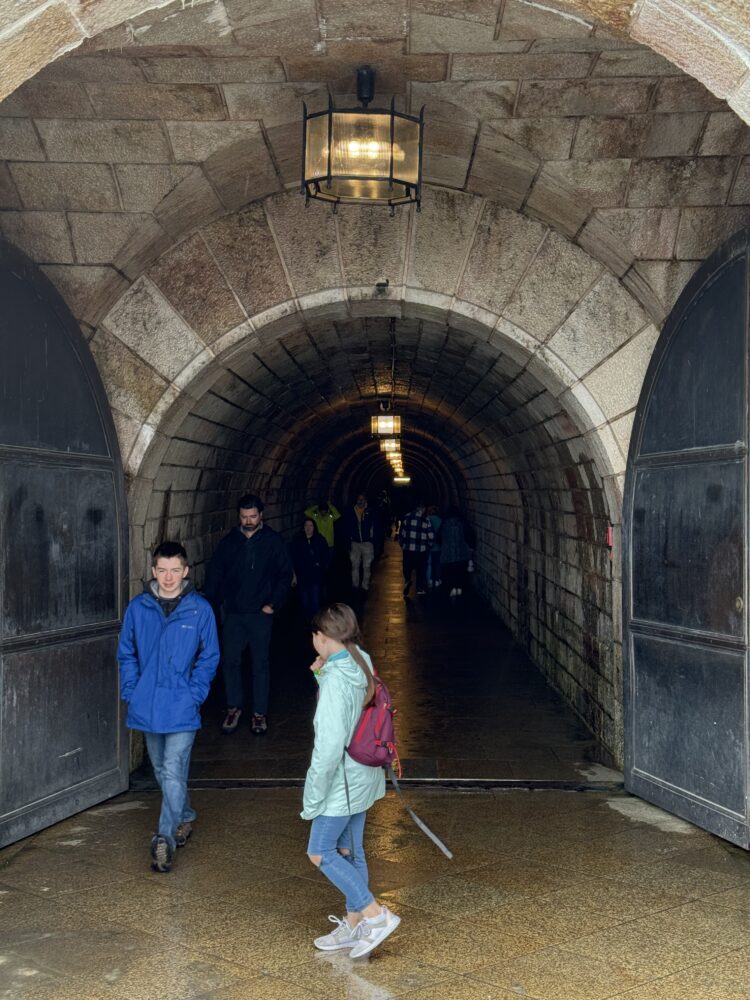
The entrance to the marble, gold-plated elevator that leads visitors to the top. As interesting as this might of been, I took some solace in knowing I’d be hoofing it up in a way that that pencil-stashed, afraid-of-heights prick never did.
The switchbacks to the summit were some of the finest of the whole journey. The moody clouds and gentle rain felt all-too appropriate for the incredible mountains now coming into view above tree line. The Alps are something truly spectacular.
Kehlsteinhaus is not actually on a summit. That distinction belongs to The Khelstein, which is the mountain just behind the building itself. I decided to bypass The Eagles Nest and reach this point first.
And what a summit it is. The sensational views, soaring peaks, and commanding position make this peak every bit worthy to play host to the secret lair of an evil madman.
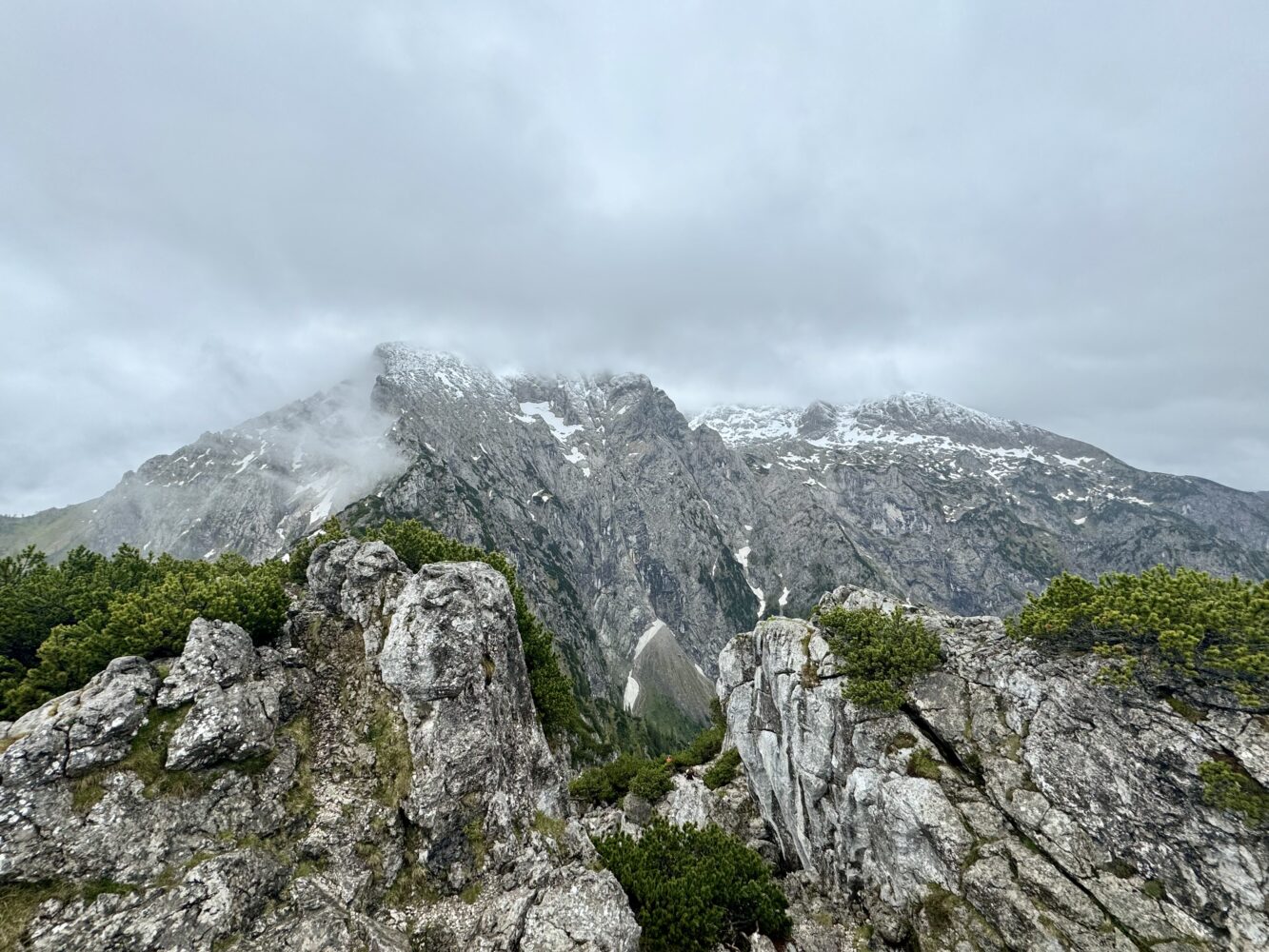
The Hoher Göll (8,274) is the high point of the Göll massif, of which The Eagle’s Nest is a part. This hulking peak sits behind and creates an impressive frame. Apparently there is a pretty spicy and fun via ferratta which can be accessed from the connecting ridge with The Kehlstein. But whatever notions I’d harbored about making an attempt at this were quickly dashed by the lingering snowfields, actively falling graupel, and 32 degree temps. Another day, perhaps.
After taking the appropriate amount of time to gape in awe at the surrounding landscapes, I eventually started to get cold. I made a hasty retreat to visit the building itself.
The Eagle’s Nest today runs a pretty low profile. There are a few informative signs inside, but there’s not too much else by way of history or guided tours. I read that they intentionally try to downplay things up here in an effort to curb the enthusiasm of any modern neo-Nazi visitors. As our Austrian tour guide had commented a few days prior, “some of those assholes are still around today, you know.” So, it made sense that they were wary of such people.
Instead, the use of the building is probably the biggest middle finger imaginable to the Nazis: it is a restaurant filled to the brim with gaping tourist morons from every tribe and nationality on earth. It even has (of course) a tacky gift shop selling useless Eagle’s Nest trinkets. Apparently no tourist spot is immune from such things.
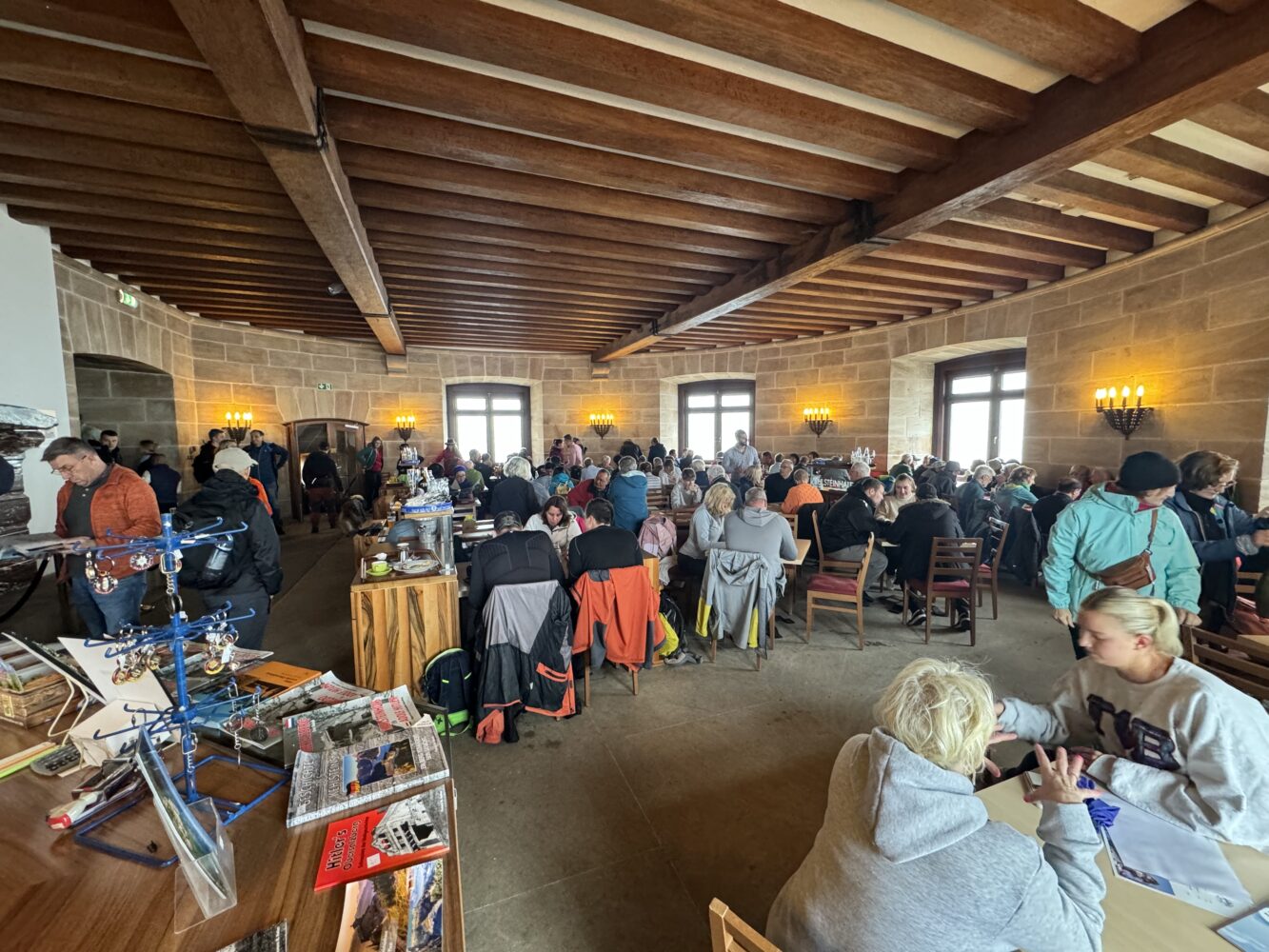
The great room of the building has been converted into a cafe with a small gift shop. Hard to find anything much more European than that.
After wandering around for a bit the claustrophobia became too much to handle. So, I filled up my bottles, snuck a quick peek inside the famous gold elevator, and set out once again into the rain for my long descent.
The descent went quickly and smoothly. The only real issue was trying to control my speed. A feat which I only marginally succeeded at, as my quads the next day would attest.
As I rode the various buses back to Salzburg, I enjoyed the final moments to reflect on all that I had seen and done. This was certainly one of the more unique and interesting summits I’ve ever stood upon.
I found my final thoughts drifting back to the men of Easy Company and their successful liberation of this place almost 80 years ago. I felt humbled by their struggle and in awe of their fortitude. To walk where they did and to finally vanquish the greatest evil the world has ever known is a story that seems unlikely to ever be repeated. The concluding remarks of Major Winters felt like an appropriate concluding thought after a journey to this place.
Thanks for reading if you did. Happy climbing!

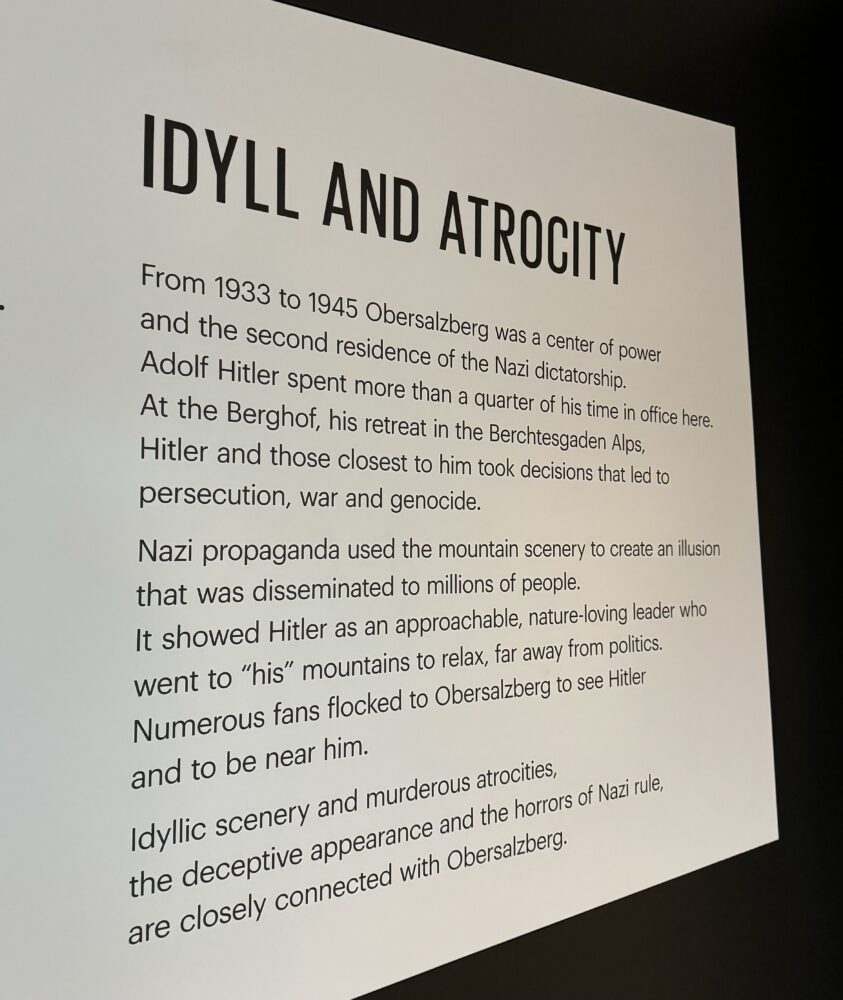
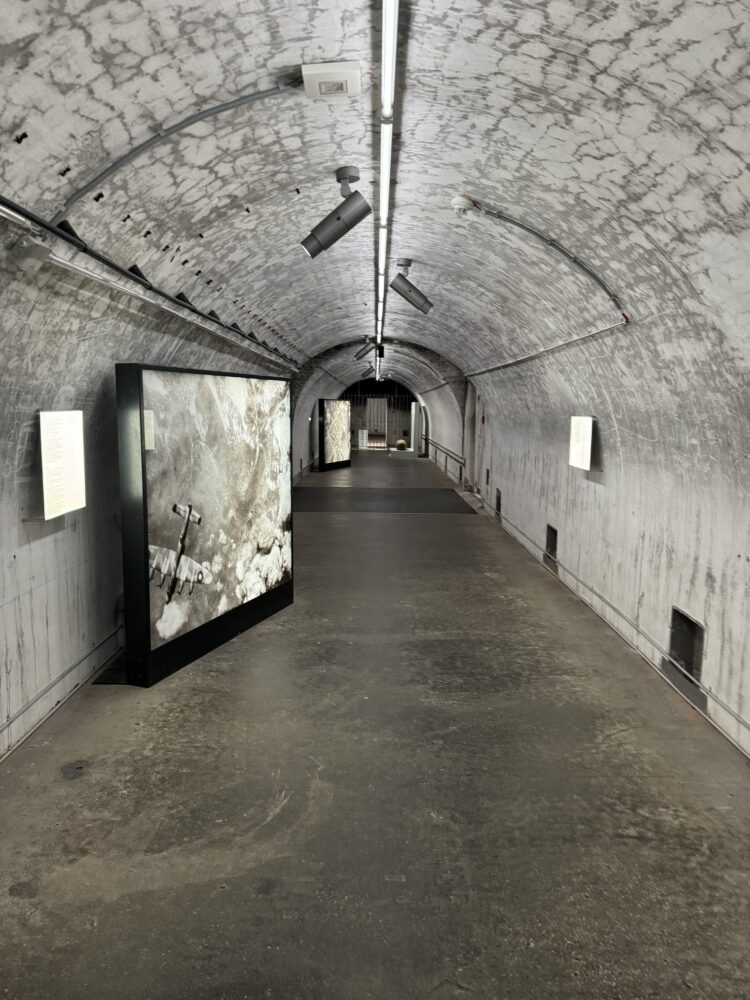
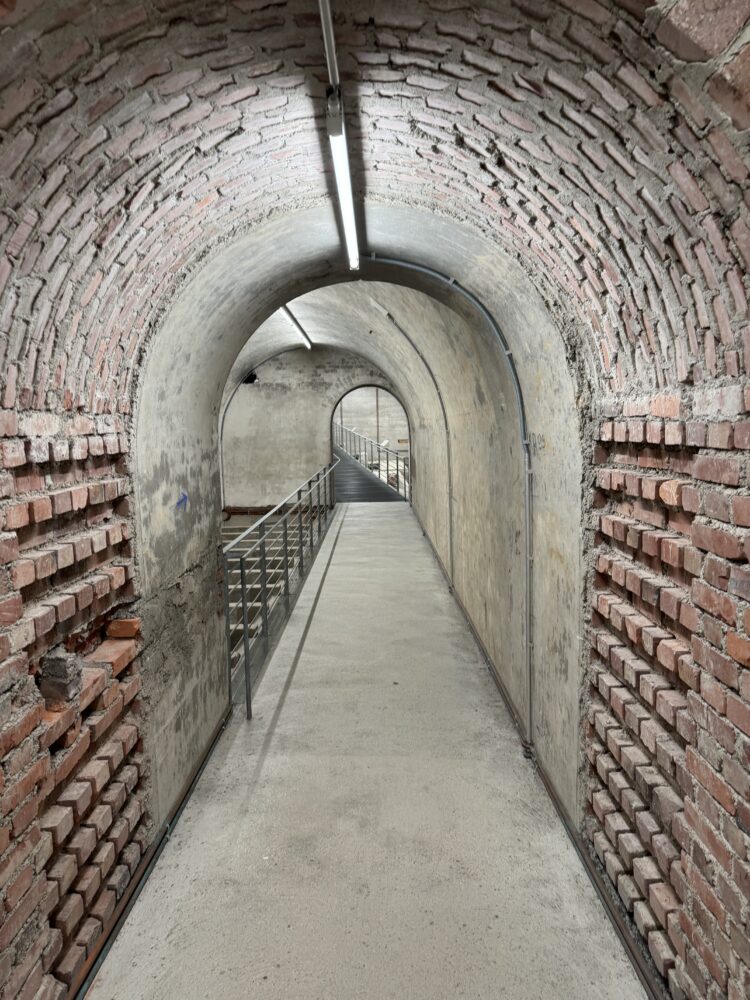
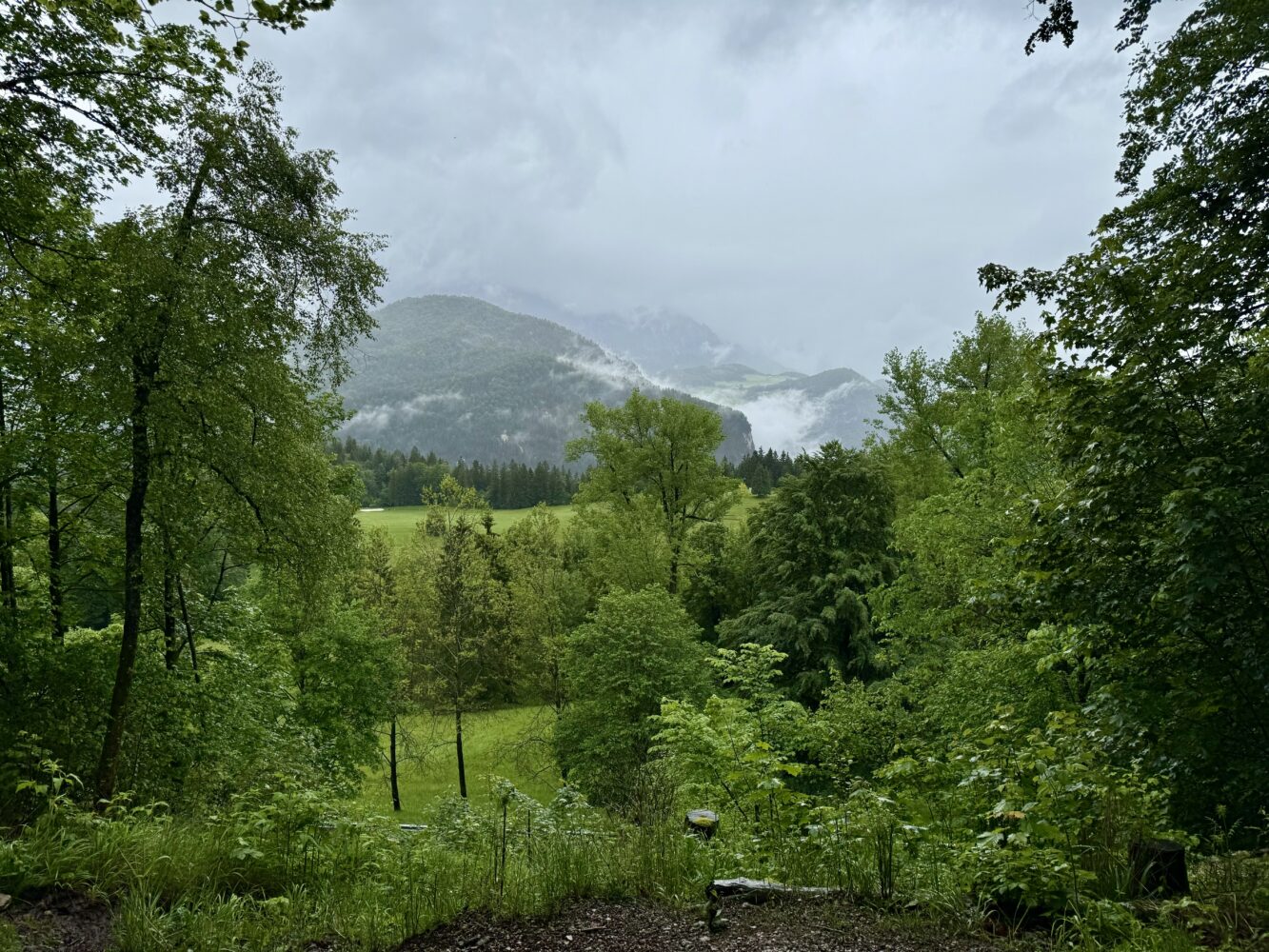
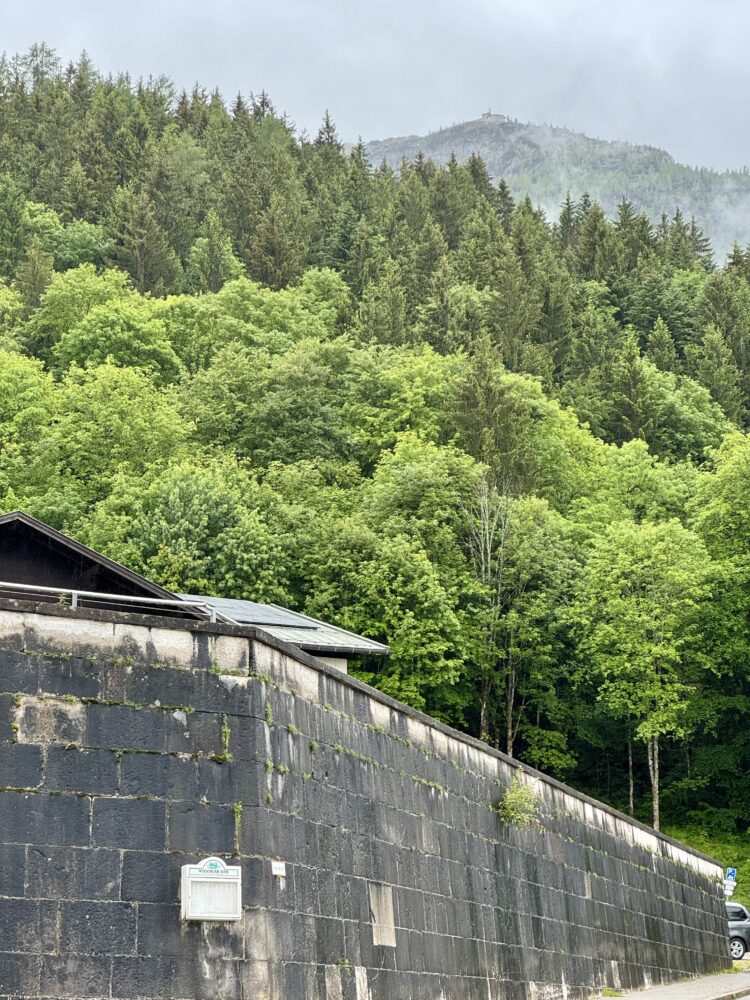
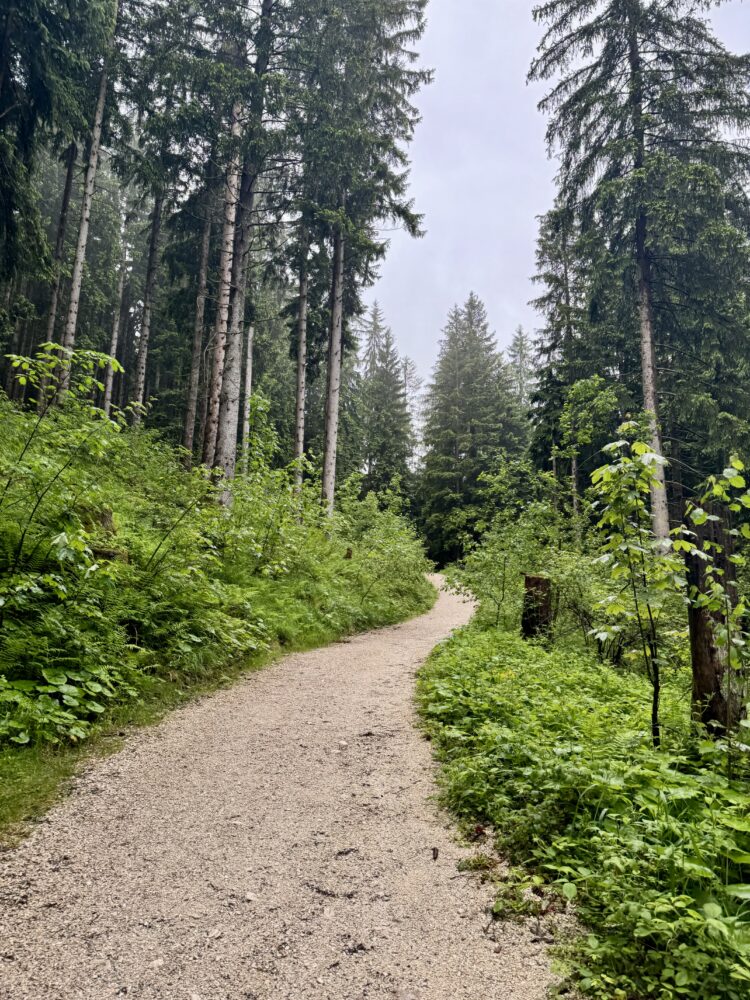
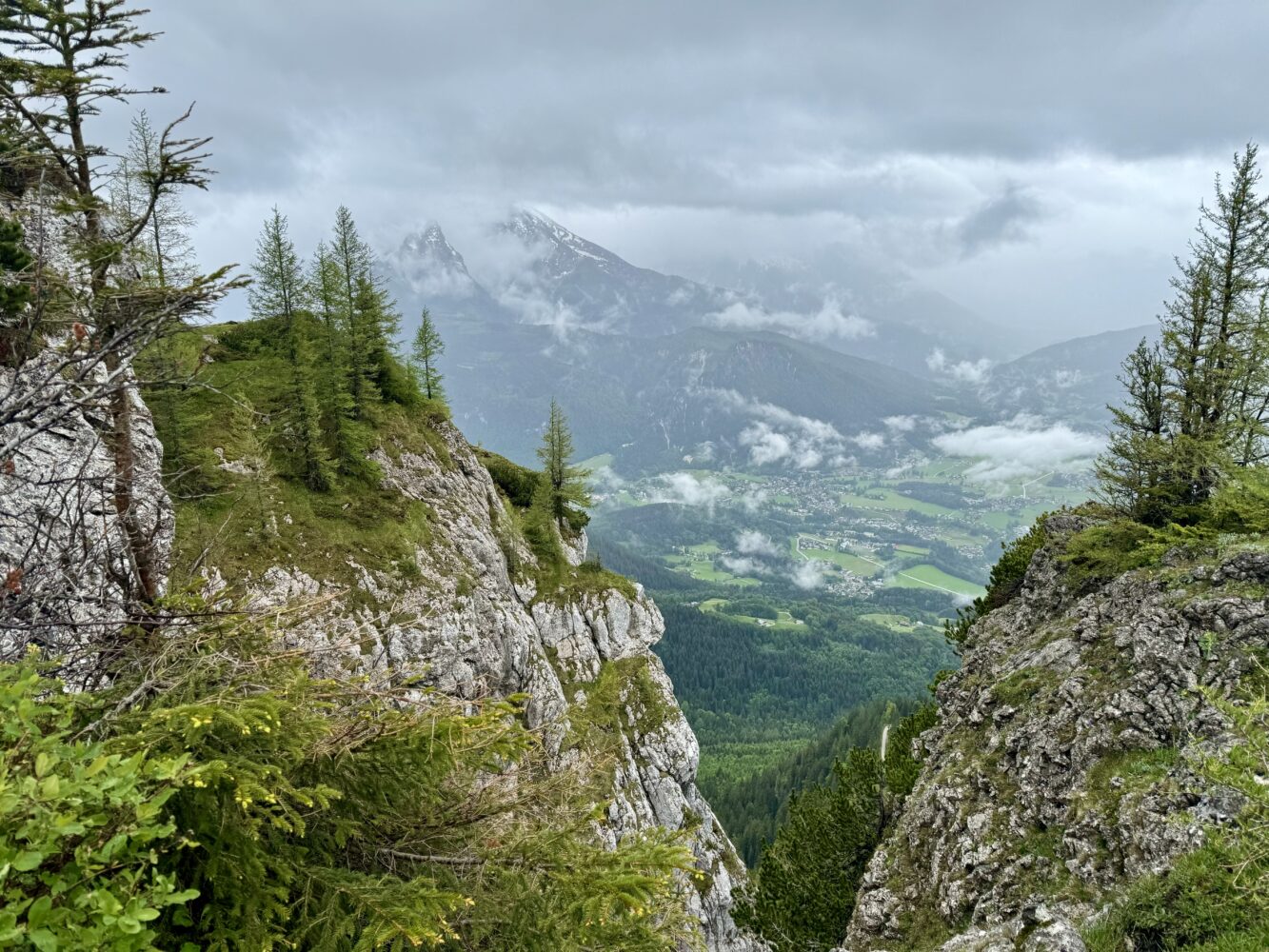
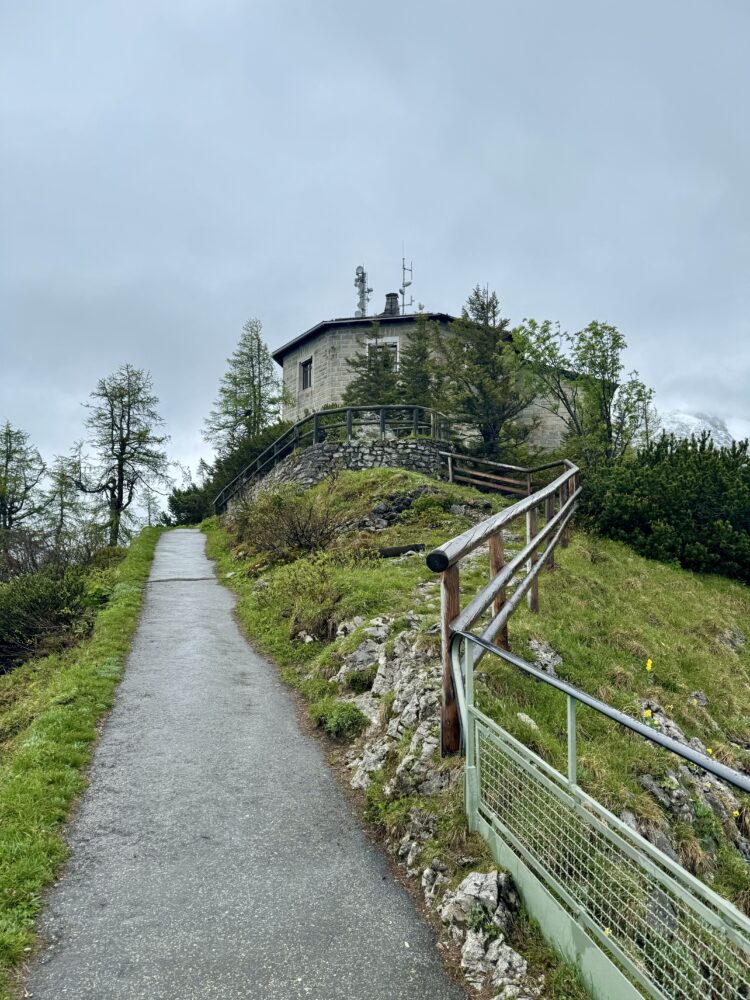
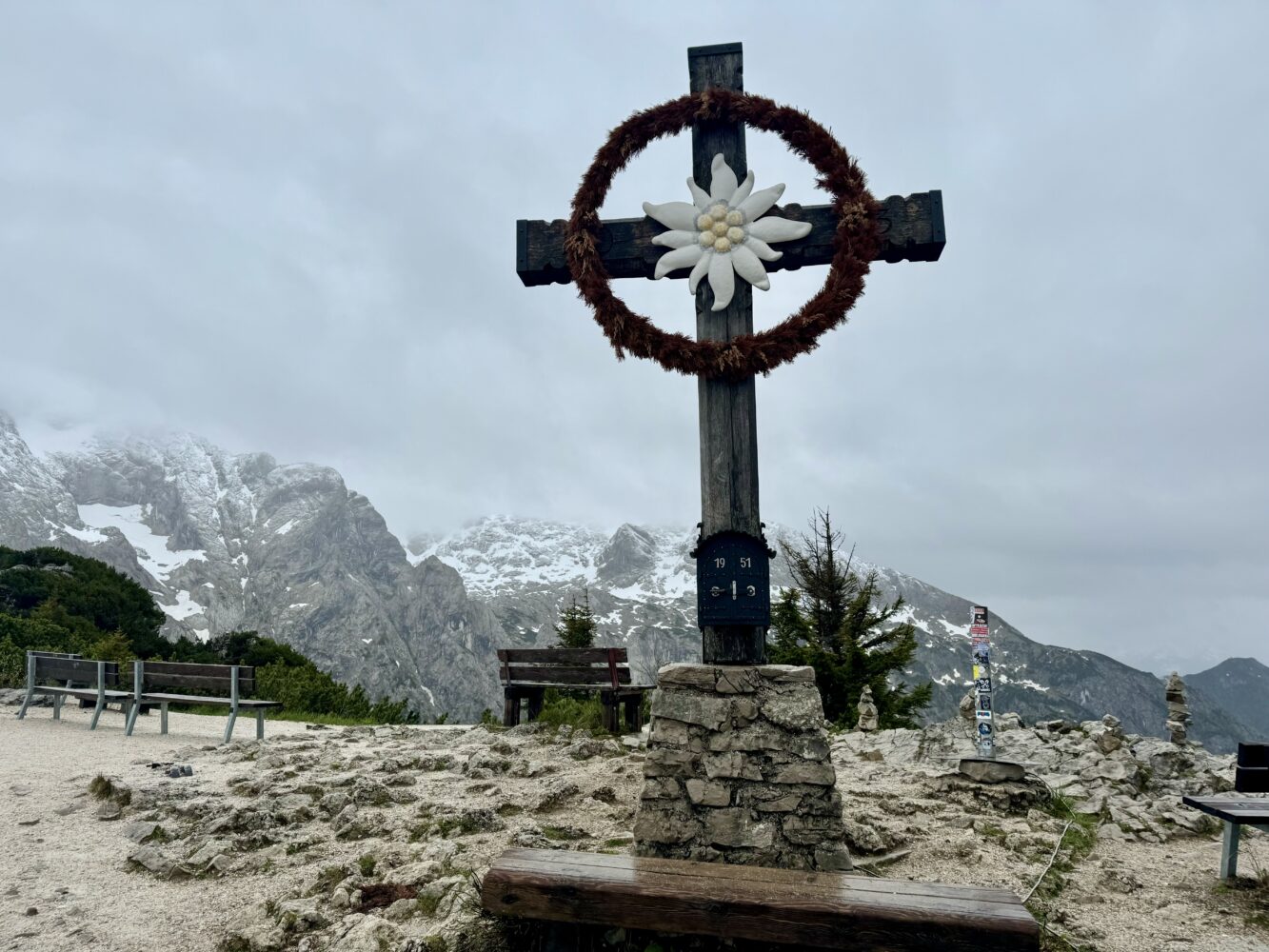
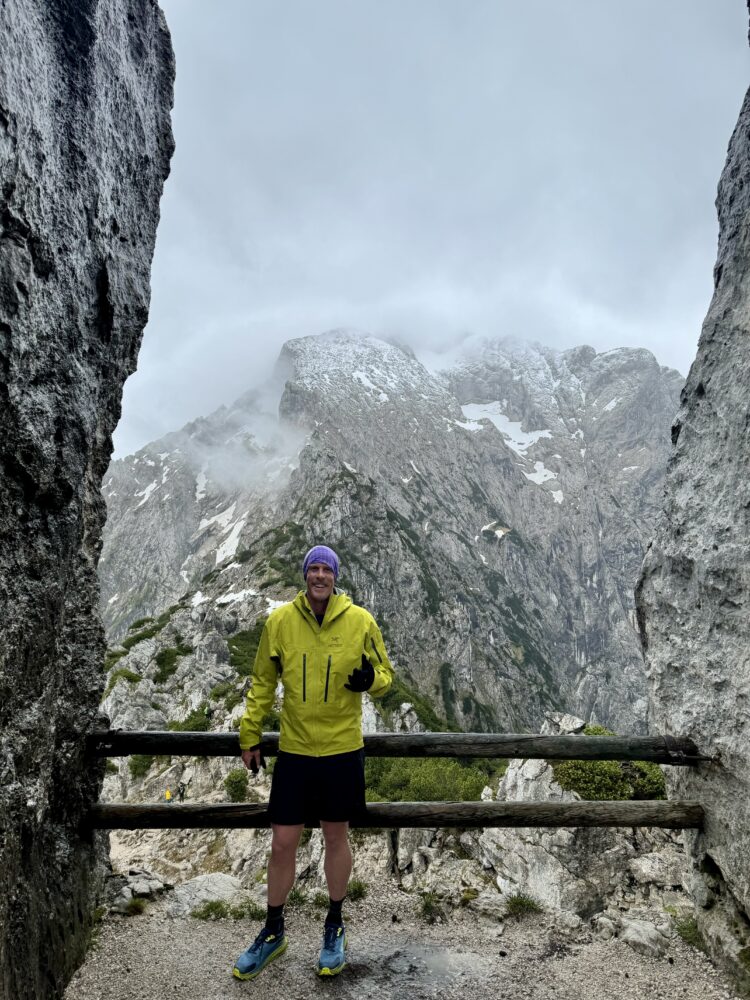


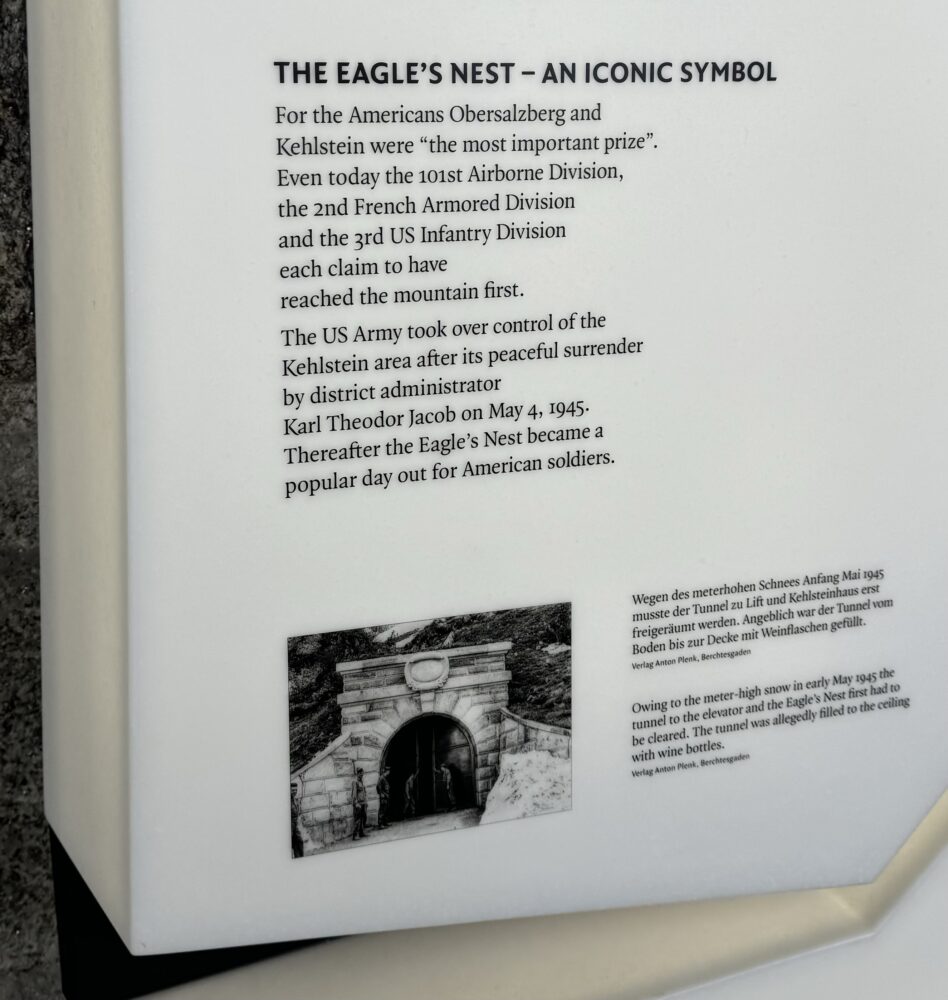

Very cool history lesson/run combo and larger Euro trip! Looks like you guys had a great time over there. Those tunnels are pretty wild.
P.s. I still need to watch Band of Brothers…
Thanks Ben! And yes, you would LOVE Band of Brothers…